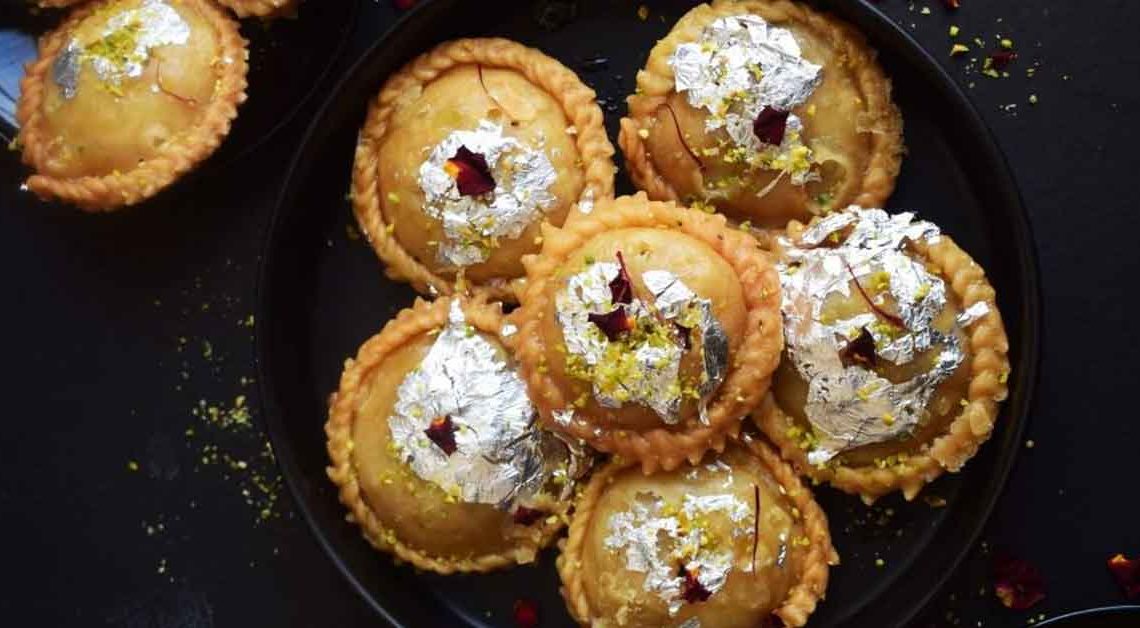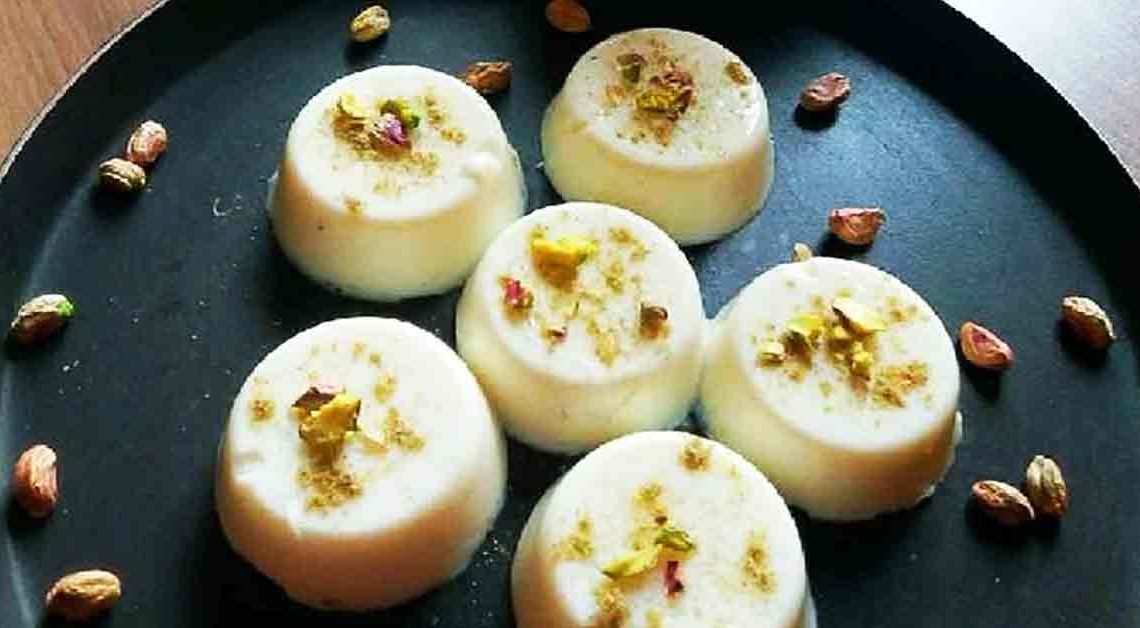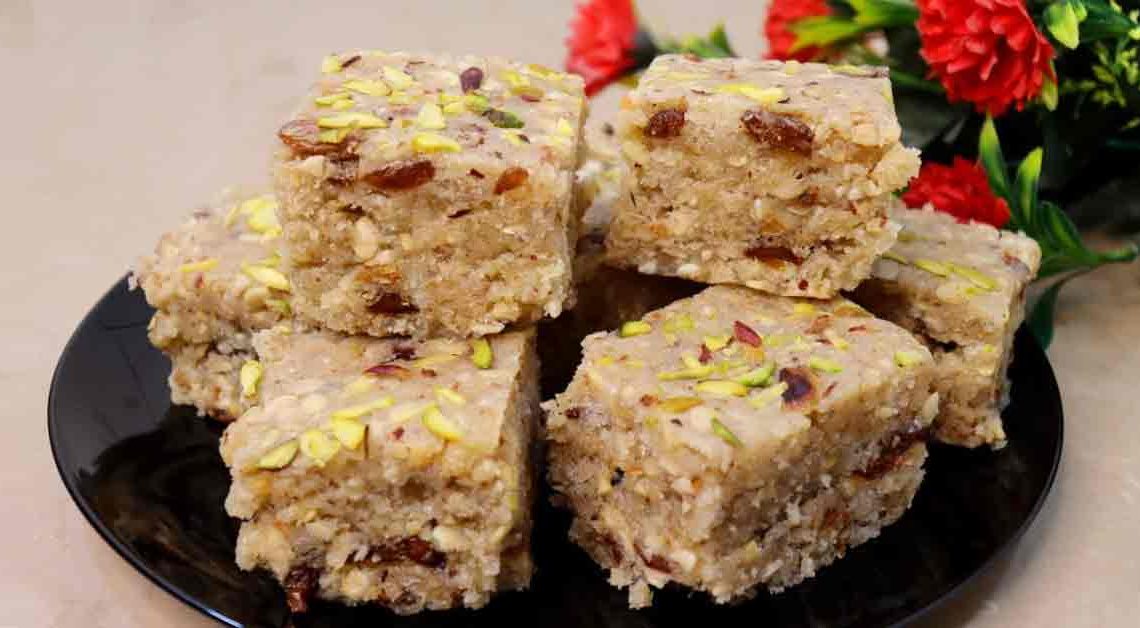Experience the Allure of Chandrakala in Every Bite

Welcome to our culinary journey through Mithainama to the delightful world of Indian sweets! Today, we delve into the rich history and exquisite flavors of Chandrakala, a beloved treat that captures the essence of traditional Indian desserts.
Originating from the royal kitchens of Rajasthan, Chandrakala is a sweet pastry that embodies the essence of indulgence and sophistication. Its name, derived from the Sanskrit words “Chandra” and “Kala” alludes to its crescent moon-like appearance, reminiscent of the celestial beauty of the night sky.
Crafted with a delicate balance of refined flour, ghee, and a sweet filling of khoya, dry fruits, and aromatic spices such as cardamom and saffron, it is a true masterpiece of Indian sweets. Each bite offers a harmonious blend of textures and flavors, with the crispness of the pastry complementing the lusciousness of the filling.
Experience the magic of Chandrakala as we take you on a culinary adventure that celebrates the sweet traditions of India.
Origin of Chandrakala
The origin can be traced back to the royal kitchens of Rajasthan, a state in northern India known for its rich culinary heritage. This sweet delicacy is believed to have been created as a royal treat, showcasing the culinary prowess and creativity of the royal chefs.
It is said to have evolved from the more popular sweet dish called Gujia, which is a deep-fried pastry filled with a sweet mixture of khoya, nuts, and sugar. Over time, variations of Gujia emerged in different regions of India, with each region adding its own unique twist to the recipe.
In Rajasthan, the royal chefs refined the Gujia recipe, creating a more delicate and sophisticated version known as Chandrakala. The name “Chandrakala” is derived from the Sanskrit words “Chandra” and “Kala”, referring to its crescent moon-like shape.
Today, it remains a popular sweet during festivals and special occasions in Rajasthan and other parts of India, continuing its legacy as a symbol of indulgence and culinary artistry.
History of Chandrakala
The history is deeply rooted in the rich culinary traditions of India, particularly in the state of Rajasthan. This exquisite sweet has evolved over the centuries, blending cultural influences and culinary innovations to become the beloved delicacy it is today.
The exact origins are not well-documented, but it is believed to have originated in the royal kitchens of Rajasthan, where skilled chefs crafted exquisite dishes to delight the royal palate. It likely evolved from the popular sweet dish known as Gujia, which is a deep-fried pastry filled with a sweet mixture of khoya, nuts, and sugar.
Over time, it emerged as a more refined and elaborate version of Gujia, featuring a delicate pastry filled with a rich, sweet mixture and often garnished with silver leaf or chopped nuts. The name “Chandrakala” itself, which means “moon-shaped” in Sanskrit, reflects the crescent moon-like shape of this delectable sweet.
Today, it remains a symbol of tradition and celebration, often enjoyed during festivals and special occasions. Its history is a testament to the culinary artistry of Indian chefs and the rich cultural heritage of the region.
Cultural Significance
It holds significant cultural importance in India, particularly in regions like Rajasthan, where it is deeply rooted in local traditions and customs. Here are some aspects of its cultural significance:
Festivals and Celebrations: It is often prepared and enjoyed during festivals and special occasions such as Diwali, Holi, and weddings. It is considered a symbol of good fortune and is shared with friends, family, and neighbors during these festive times.
Traditional Cuisine: It is a part of India’s rich culinary heritage, showcasing the skill and creativity of Indian chefs. It is often made using traditional methods and recipes passed down through generations, making it a cherished part of local cuisine.
Artistry and Craftsmanship: The making requires skill and precision, especially in shaping the pastry and filling it with the sweet mixture. This craftsmanship is celebrated and reflects the artistry of Indian culinary traditions.
Where is Chandrakala Famous?
It is particularly famous in the northern Indian state of Rajasthan, where it originated from the royal kitchens. It holds a special place in the culinary traditions of Rajasthan and is enjoyed during festivals, weddings, and other special occasions.
However, it is also appreciated and enjoyed in other parts of India where it has been introduced and embraced. Its popularity extends beyond Rajasthan to regions with a strong affinity for Indian sweets and traditional cuisine.
In addition to being enjoyed domestically, it has gained recognition internationally among lovers of Indian cuisine. Indian restaurants and sweet shops around the world often include it on their menus, introducing it to new audiences and spreading its fame globally.
Overall, while its roots lie in Rajasthan, its popularity has transcended geographical boundaries, making it famous both within India and beyond.
Interesting Facts and Trivia
Here are some interesting facts and trivia related to Chandrakala:
- It is believed to have originated in the royal kitchens of Rajasthan, where it was created as a special treat for the royalty.
- While the basic recipe for Chandrakala remains the same, there are variations in the filling and presentation across different regions of India. Some versions include additional ingredients such as coconut, poppy seeds, and dates.
- Some recipes for Chandrakala include saffron-infused sugar syrup, giving the sweet a distinct flavor and aroma.
- In different parts of India, Chandrakala is known by different names, such as Somaas in Gujarat and Karanji in Maharashtra.
- While Chandrakala is a delicious indulgence, it is also quite rich in calories due to its high sugar and ghee content. It is best enjoyed in moderation as part of a balanced diet.
Did You Know?
Did you know? Chandrakala, besides being a delectable treat, offers surprising health benefits when consumed in moderation. This traditional Indian sweet is not just a delight for the taste buds; it also provides:
- It is made with ingredients like khoya (reduced milk), nuts, and ghee, which are high in calories and provide a quick energy boost, making it an ideal snack for instant energy replenishment.
- The filling typically contains a variety of nuts such as almonds, cashews, and pistachios, which are rich in essential nutrients like protein, fiber, vitamins, and minerals. These nutrients support overall health and well-being.
- Ingredients like saffron and cardamom, commonly used in Chandrakala, possess antioxidant properties that help combat oxidative stress and inflammation in the body, promoting better immune function and overall health.
- The combination of ghee and nuts provides satiety, helping to curb hunger and prevent overeating. Additionally, the digestive spices like cardamom aid in digestion, reducing bloating and discomfort after meals.
- Indulging in a sweet treat like Chandrakala can boost serotonin levels in the brain, promoting feelings of happiness and satisfaction. Enjoying it in moderation can uplift mood and alleviate stress.







